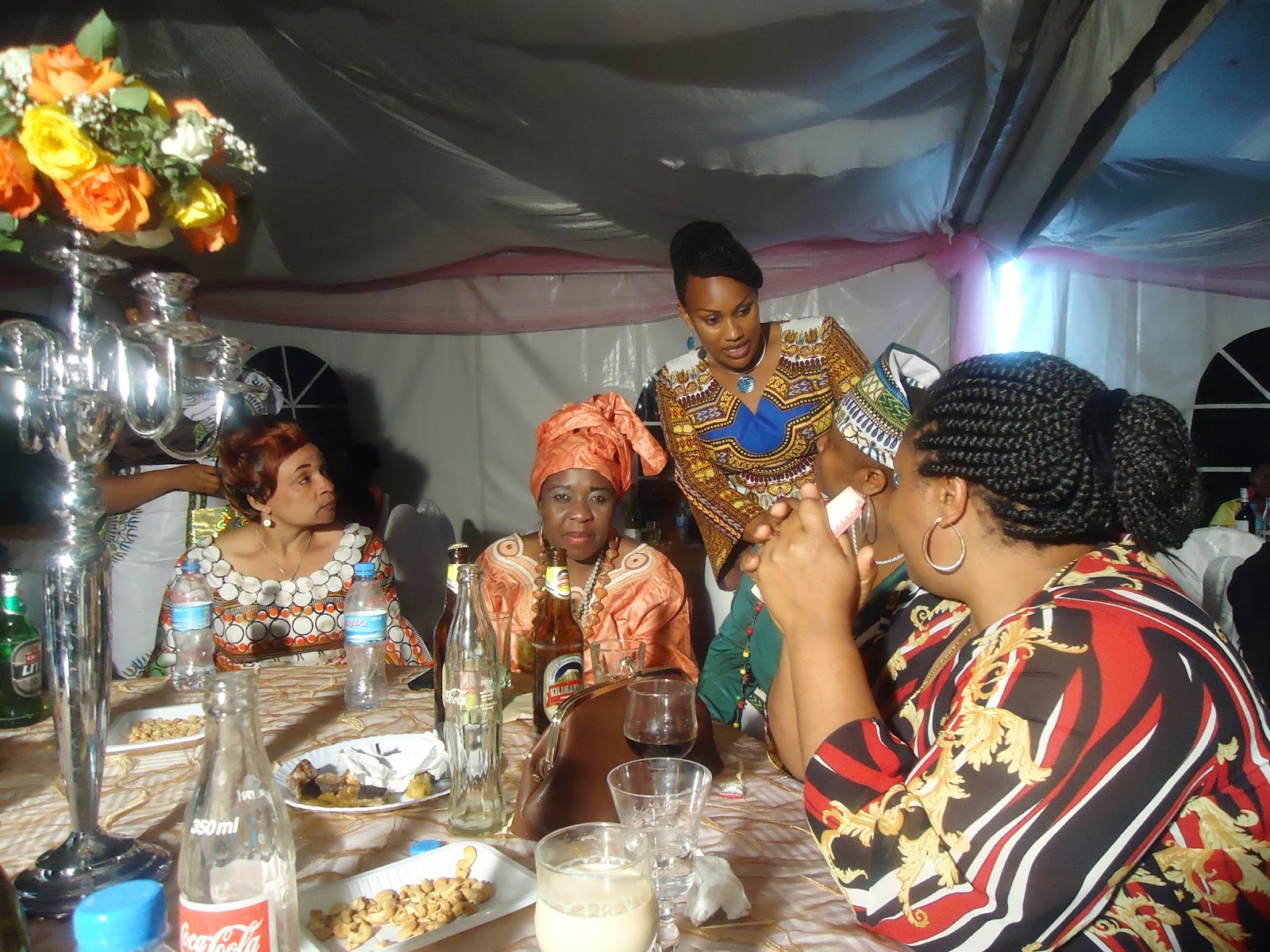1. Get Engaged
Though I've yet to receive the full story, Tanzanian engagements seem to be just like American engagements. For many women though, the transition to marriage is also a transition from their parents home to a new home with their husband, rather than an independent bachelorette pad. When I tell my Tanzanians that I had my own apartment, separate from my parents, many were shocked. In Tanzanian culture, you can live in your parents household even into your thirties - with no accusation of being a "late bloomer".
2. Wedding Fundraiser
Tanzania is all about community. The celebration of one is the celebration of all. And so is the financial burden. For the one we visited, our future bride invited more than fifty women for a delightful dinner and participation in this fundraiser. My mama, pictured here, served as the MC for the night, welcoming everyone, leading the ceremonies and announcing donations. The smiling woman to her left is the bride-to-be.
Note the matching fabrics of the dresses. The fabric here is called a kitenge. The women with the green pattern match the wedding colors, with the other three women being the bride, the bride's mother and the MC. The bride chooses the pattern, then the women are responsible for taking the material to a tailor and having it made any way they please.
The women then take turns giving their blessings and words of wisdom to the guest of honor. Of course their dialogue is more complicated than my elementary Swahili skills can handle, but you don't need to understand the language the feel the love in the room. The experience is absolutely heartwarming.
Following dinner, each guest stands, states their name and gives either a set of cash or a pledge to pay, monetary gifts ranging from 50,000 shillings to 500,000 shillings. I found it so interesting that each gift was given so publicly and so willingly. As my mama explained to me, with each woman doing this for her own wedding, you ultimately give and receive the same amount of money.
At the end of the day, the bride has received several millions of shillings (over $7000). But wait. There's more.
3. Sendoff and Kitchen Parties
The best comparison would be a classy bachelor/bachelorette party. All women and men are invited to this celebration, and each guest brings a gift. Relationships to the bride and groom predict the type of gift you might bring. Gifts may include kangas (the traditional skirt), wooden spoons, dish sets, televisions, furniture, cars and even homes. As one woman explained to me, following the wedding, you walk into your new home completely prepared for your arrival.
Maybe I'll marry a Tanzanian after all.








